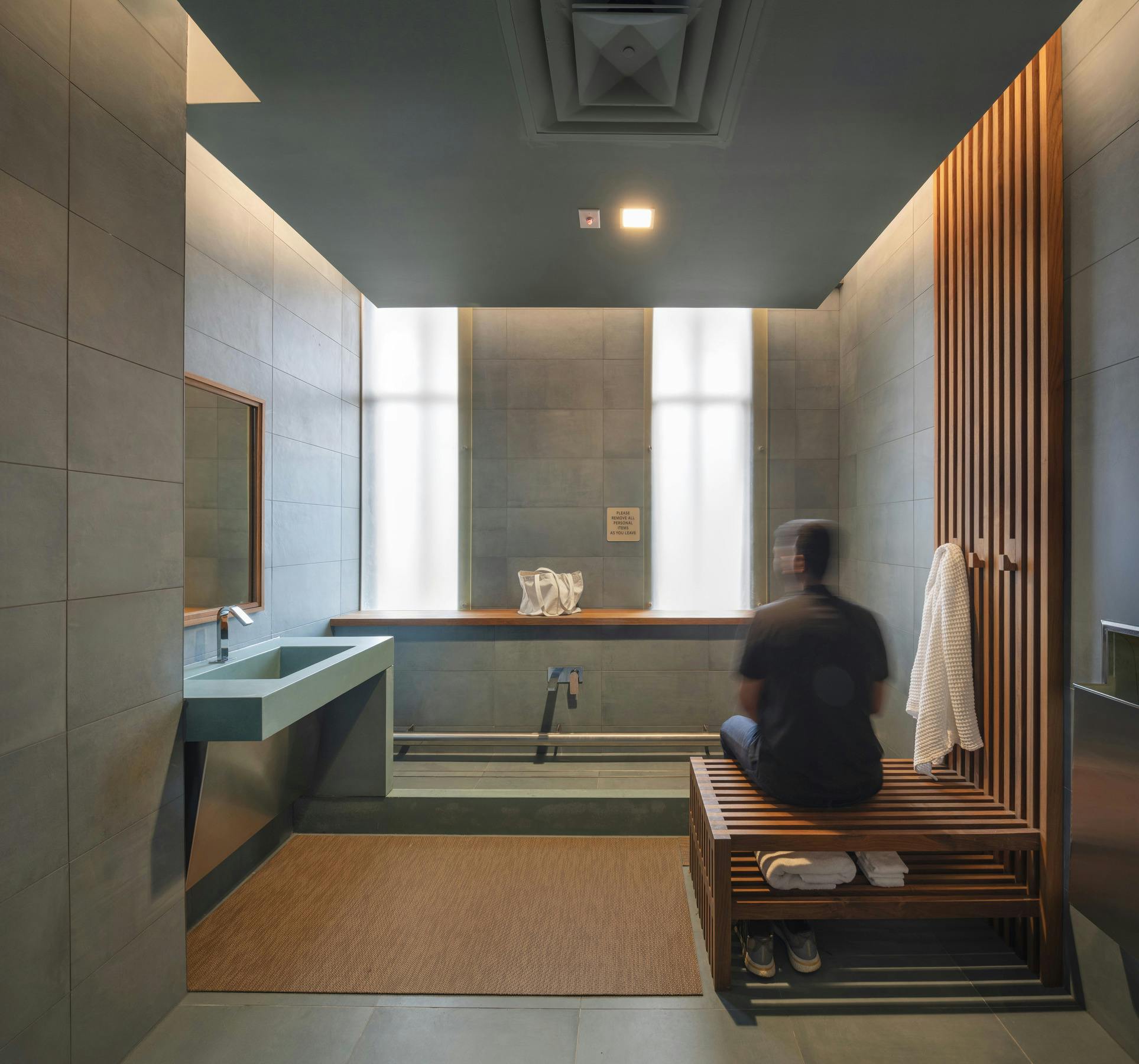



Smith Hall
Smith Hall at Sewanee combines meticulous craftsmanship and community-focused living, enhancing connections throughout the campus core.
The first project of Sewanne: The University of the South's 2011 Campus Master Plan, Smith Hall accommodates 90 first and second-year students in single and double-occupancy configurations. The building is ideally situated to create a clear link to the heart of campus while engaging an existing 100-year-old residence hall by way of a new social plaza.
The design of Smith Hall is centered on exquisite craftsmanship, where detail and materiality are essential to the building’s composition. Featuring materials indigenous to the region, heavy timber columns, beams and flooring are locally harvested on the University’s land and provide a warm contrast to the exterior stone walls, quarried from the nearby Cumberland Plateau.


Showcasing student life and providing long vistas from key vantage points influenced Smith Hall’s massing and form. This was accomplished by shaping outdoor spaces for study and social engagement, and by including areas with a high degree of transparency.








For Sewanee alumni, the motto, Ecce Quam Bonum - “Behold, How Good!” - and the Sewanee shield are the University’s two most prized pieces of symbolism. Working closely with craftsmen Eric Tietz and Andrew Baccon to create a shield using 21st century digital technology and machinery, Sewanee symbolism is reinterpreted in a contemporary manner.




Smith Hall utilizes the University’s sustainability initiatives and employs regional materials, 100 percent LED lighting, stormwater retention, bioswales, and sophisticated energy-efficient mechanical systems. The lobbies are equipped with digital monitors that display real-time energy-use data, raising student awareness of energy consumption and corresponding impacts on the environment.
- Sector: Higher Education
- Scope: Architecture
- Sewanee, Tennessee
- 2013
- 31,716 SF
- Photos courtesy of © Ty Cole Studio Inc.
- Merit Award for Architecture, AIA Coastal Virginia, 2015








